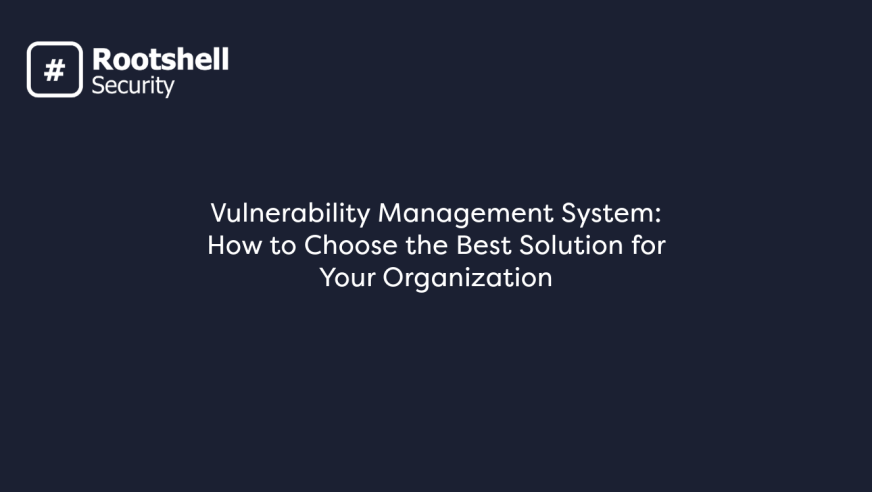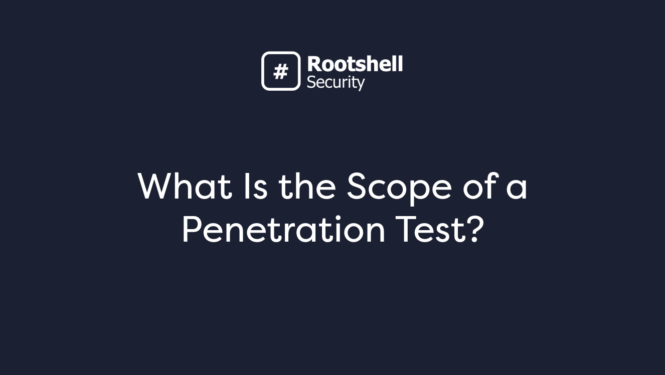Protecting your organization from cyber attacks is essential – but it’s becoming a more complex and demanding task. Information security spending is expected to increase by 15.1% this year as companies devote more resources than ever before to staying ahead of emerging threats.
In this context, an effective vulnerability management system can have a transformative impact. By helping you monitor, measure and remediate the most urgent cyber threats, a vulnerability management system can protect your reputation – and your bottom line.
In this post, we’ll explain how vulnerability management systems work and show you how to choose the right solution for your needs.
What is a Vulnerability Management System?
Vulnerability management systems are platforms that help to integrate and automate your approach to cybersecurity. These tools help you to identify and remediate vulnerabilities at pace while minimizing the manual load on your security teams.
The goal of a vulnerability management system is to equip security teams with the tools they need to manage the results of their vulnerability assessments. These tools can aid in prioritizing, delegating, reporting, tracking, and collaborating on remediation. Some vulnerability management tools may support other threat assessments too, such as penetration tests.
Why You Need a Vulnerability Management System
Vulnerability management relies on many moving parts seamlessly working together to be successful. Without vulnerability management software to support you, your approach to vulnerability management can be impeded by outdated processes and come up against a range of roadblocks. These include:
- Data overload. Vulnerability assessments can inundate you with data. You may find yourself emailing back and forth with vendors or hunting through PDF reports to find the results you need. This can hinder your ability to address issues quickly.
- Tracking. Delegating remediation can require collaboration with both internal and external teams. This can be difficult to keep track of without an appropriate system. Read more on how to track vulnerability remediation.
- Security concerns. Assessment results are highly sensitive documents, and your organization would be incredibly vulnerable if they ended up in the wrong hands. Receiving and sharing your results using email or cloud applications could be risky.
- Time-consuming processes. Without a vulnerability management solution, teams typically need to reformat their assessment results before they can begin managing them, such as transferring results from PDFs to spreadsheets. This can be slow, repetitive, and divert resource from what’s most important.
- Human error. Not only can traditional vulnerability management processes be time-consuming, but handling your assessment data manually can also lead to mistakes. This could pose serious risks to your organization, particularly if a critical issue is missed.
By implementing a vulnerability management solution, you can tackle these varied and complex issues and ensure your cybersecurity processes are fit for purpose.
Benefits of a Vulnerability Management System
- Consolidate assessments. A vulnerability management tool enables you to easily manage the results from a variety of assessments, including vulnerability scans and penetration tests.
- Break down silos. A vulnerability management system prevents your teams from analyzing different types of vulnerabilities in isolation, enabling a more coordinated approach to assessing and remediating potential issues.
- Automate your workflows. Vulnerability management tools allow you to automate key aspects of the vulnerability management process, reducing the burden on your security teams and freeing up resources to tackle other priorities.
- Integrate threat intelligence. By automatically incorporating the latest information from your threat intelligence feeds, your vulnerability management system can help you stay ahead of emerging threats.
- Visualize your security posture. A vulnerability management system gives your teams a unified and cohesive picture of your cybersecurity efforts, allowing for effective progress monitoring.
How to Choose a Vulnerability Management System
Not all vulnerability management solutions are built equally. We believe that the best vulnerability management tools address the following points:
- Vendor-agnostic. The best vulnerability management systems don’t tie you to a specific vendor. Selecting a vendor-agnostic vulnerability management platform enables you to consolidate assessment results from different suppliers. This is of particular benefit to multinational organizations.
- Real-time. As soon as a critical vulnerability is discovered, time is of the essence. Your vulnerability management system should facilitate the delivery of your assessment results in real-time, so you can address critical issues as soon as they are identified.
- Scalable. Your vulnerability management tool should be able to grow with your organization. Be aware of any systems that limit the number of issues, assets, or users you can manage.
- Reporting. Make sure the vulnerability management software reports on the right information to support your security teams and system administrators. Does it measure the essential vulnerability management metrics you need to track?
- Holistic. Does the vulnerability management system support other assessments, such as combining threat and vulnerability assessments? This would enable you to gain a more holistic view of your threat landscape.
- Integrations. A vulnerability management tool should fit seamlessly with your existing processes and workflow. Does the system offer integrations with third-party tools, such as ticketing systems?
- Security. Vulnerability management companies should ensure their systems are built with your organization’s security in mind. For example, does the system offer multi-factor authentication?
By assessing your prospective vulnerability management system against these various criteria, you can ensure you get the right solution for your organization.
The Rootshell Platform: Next Generation Vulnerability Management System
The Rootshell Platform is a vendor-agnostic vulnerability management solution. It enables you to manage results from any type of IT security assessment, including penetration tests, giving you the unique advantage of analysing different assessment results alongside each other in one standardised format.
The Rootshell Platform’s unique features help you accelerate every stage of the vulnerability management process and enhance efficiency from start to finish:
- Consolidate your supplier assessment data. Import any assessment result into Rootshell. You can store data from any penetration testing vendor or security service provider in one centralised hub.
- Integrate and standardize your assessment data. Generate a database for your results in one consistent format. Instead of analyzing your assessment results in silos, you can view data from different threat assessments alongside each other.
- Contextualize and prioritize your assessment data. Receive real-time insights and gain greater context of your issues, helping you prioritize most effectively.
- Streamline your remediation workflow. Make remediation faster and more efficient, with third-party integrations, collaboration tools, real-time updates from testers, and more.
- Track and validate your remediation results. Measure your remediation efforts against your vulnerability management Service Level Agreements (SLAs) and track key metrics such as your monthly remediation rate.
- Visualize and analyze technical risk across the whole organization. Gain a holistic view of your global threat landscape. Effortlessly analyse your technical risk with insightful dashboards and automated reporting.
If you’d like to learn more about how the Rootshell Platform can transform your vulnerability management processes, book a guided demo with one of our experts today.



